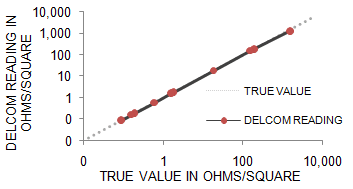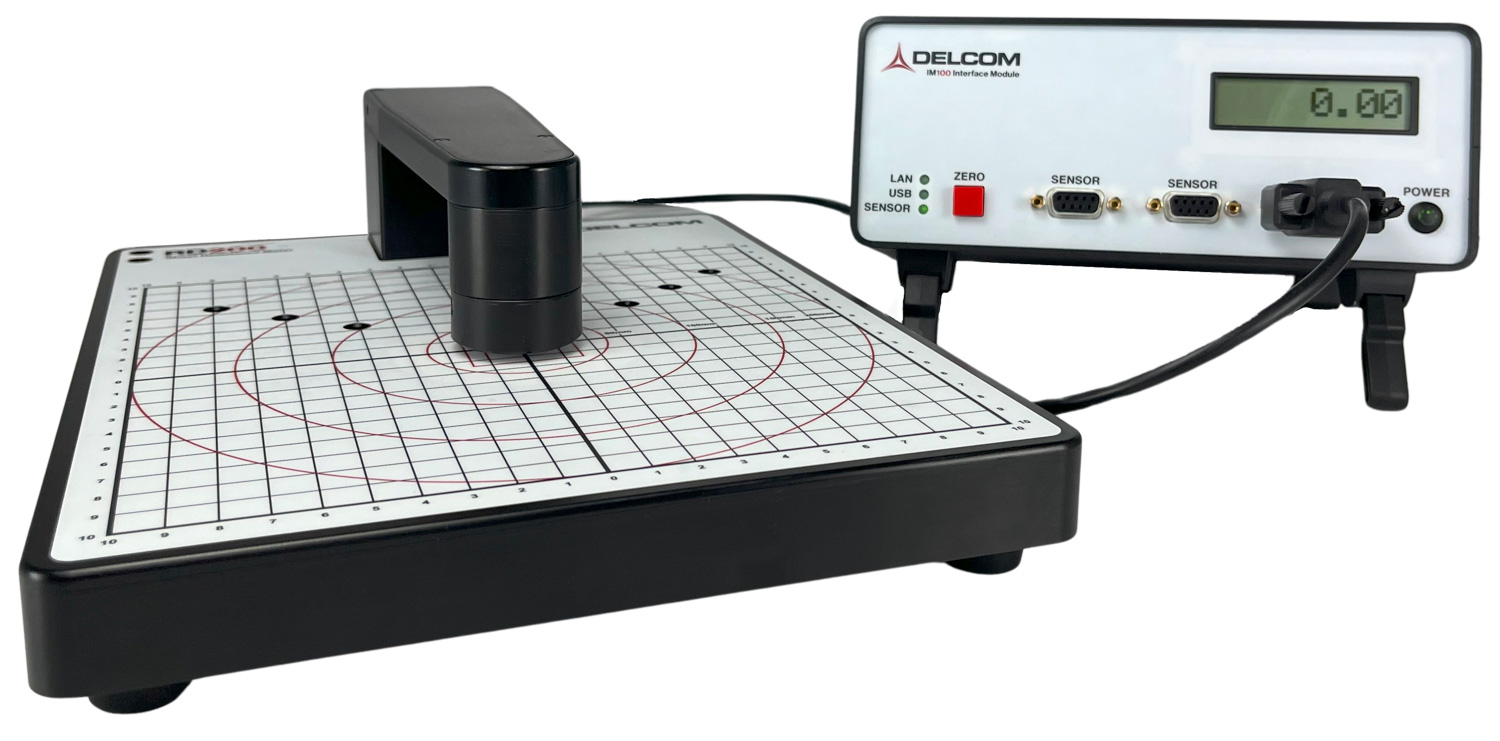Accuracy, Resolution, and Linerity
Accuracy
Each Delcom sensor is calibrated against a National Institute for Standards and Technology (NIST) standard. This calibration takes place at the order of magnitude in which the sensor has the most significant digits. If all environmental factors are held constant and the calibration standard is inserted back into the sensor at exactly the same location, the meter will read the exact value of the standard. For this reason, Delcom guarantees 99.9% accuracy.
Any eddy current instrument should be nearly 100% accurate when measuring the standard that was used to calibrate it. Therefore any question from a user about the accuracy of a Delcom meter is really a question of whether the user’s standards match the standards used by Delcom. To make this question moot, any Delcom instrument can be quickly calibrated to a standard by the user upon receipt of the instrument. Calibration is a simple process that takes less than one minute.
Resolution
Resolution is a function of the significant digits available at each order of magnitude in a meter’s range.
If the user is using a Delcom meter in mhos/square as the unit of measurement, keeping track of significant digits is easy: every digit is significant.
However, if a user is using a meter with ohms/square as the unit of measurement, care must be taken to keep track of—and understand—which digits are significant and which are not.
Each meter range spans different orders of magnitude. For this reason, the user should be familiar with the number of significant digits to expect in each order of magnitude for the meter range in use.
Significant Digits Available at Each Order of Magnitude
| Range | .001 | .01 | .1 | 1 | 10 | 100 | 1K | 10K |
|---|---|---|---|---|---|---|---|---|
| x10 | 5 | 4 | 3 | 2 | 1 | |||
| x1 | 5 | 4 | 3 | 2 | 1 | |||
| ÷10 | 5 | 4 | 3 | 2 | 1 | |||
| ÷100 | 5 | 4 | 3 | 2 | 1 |
Linearity
Linearity is the answer to the question, “If a meter is calibrated with a standard at one point in the meter’s range, how accurate will the meter be when reading other possible values in its range?”
Delcom calibrates each meter at the order of magnitude in which it has the most significant digits. Delcom then characterizes each meter’s linearity against multiple standards over the entire range of the meter. Delcom guarantees no more than 3% deviation from the true sheet resistance value of tested material. The graph below shows a Delcom sensor tested against 10 NIST, VLSI, and MSA standards.


 Veteran Owned
Veteran Owned Veteran Owned
Veteran Owned


